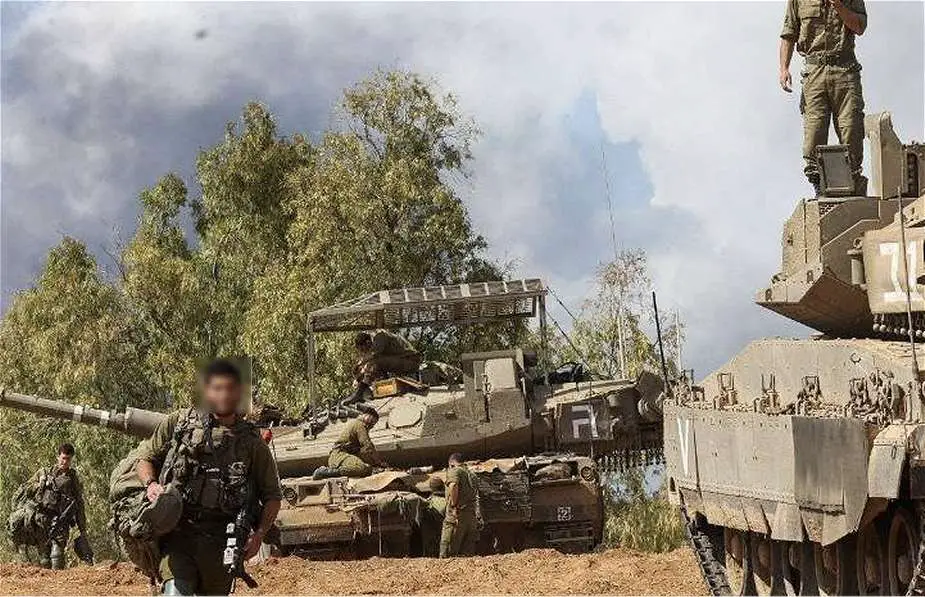Israeli Merkava 4 Tanks Get Anti-Drone Cages After Russian-Ukrainian Lessons
According to pictures released on social networks, the Israeli army has learned from the experiences of the Ukrainian conflict. The turret roofs of Merkava 4 tanks are now equipped with a "Cope Cage" or "Protective Canopy." This type of armor is designed to offer protection against aerial attacks, such as drones and loitering munitions.
Follow Army Recognition on Google News at this link

The Israeli Merkava 4 tanks are now equipped with a top armor cage to increase protection against drones and loitering munition attacks. (Picture source Twitter account @bayraktar_1love)
In a rapidly evolving battlefield scenario, armies worldwide are keenly observing and learning from recent conflicts to adapt and enhance their military capabilities. One such adaptation comes in the wake of the Russian-Ukrainian war, which showcased the significant role of drones in modern warfare.
Recent photographs have emerged showing Israeli Merkava 4 Main Battle Tanks (MBTs) equipped with what appear to be anti-drone cages. These protective structures are believed to be designed to counter the threat posed by low-flying drones, which can be used for surveillance, targeting, or direct attacks.
The Russian-Ukrainian conflict highlighted the vulnerability of armored vehicles and ground troops to drone strikes. The use of drones, both for reconnaissance and as an offensive tool, has changed the dynamics of ground warfare. Recognizing this, the Israeli Defense Forces (IDF) seem to be taking proactive measures to safeguard their armored units.
Modern battle tanks, while formidable in their design and capabilities, have certain vulnerabilities when faced with the evolving threats of the battlefield. One of the most pronounced challenges comes from drones, especially those equipped to launch explosive charges. The top armor of most battle tanks is generally thinner than the frontal or side armor. This design aspect makes them particularly susceptible to attacks from above. Drones, with their ability to hover and attack from an elevated position, can exploit this vulnerability by dropping munitions directly onto the tank's top surface.
Furthermore, while tanks are designed to withstand threats from ground-based adversaries, they often lack the necessary equipment to counter small, agile drones. Traditional anti-aircraft systems, which are meant to target faster and larger aircraft, may not be as effective against low-flying or hovering drones. This limitation presents a significant challenge, as even unarmed drones can pose a threat by providing real-time surveillance, relaying the tank's position and movements to enemy forces. Such information can be invaluable for coordinating attacks or planning strategic maneuvers.
Additionally, some drones come equipped with specially designed explosive charges that can adhere to a tank's surface upon contact. These charges, once attached, can be detonated remotely, inflicting considerable damage. The introduction of anti-drone cages on tanks, such as those observed on Israeli armored units, is a testament to the evolving nature of warfare. These cages act as a physical barrier, preventing drones from getting too close, thereby mitigating the risks of both surveillance and direct attacks.
The continuous evolution of technology and tactics in modern warfare necessitates that armed forces remain adaptable and forward-thinking. The adaptation of anti-drone measures on tanks is a clear indication of global militaries learning from recent conflicts and preparing for future challenges on the battlefield.
Defense News October 2023


























